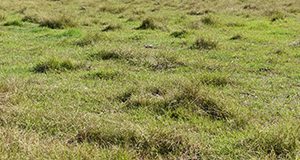Brunswickgrass (Paspalum nicorae Parodi) is becoming a problematic weed in summer perennial grass pastures in the Southeast. The plant is competitive with bahiagrass
and bermudagrass. Since it is less palatable, it can eventually dominate a perennial grass pasture. Brunswickgrass has become naturalized and has reportedly contaminated bahiagrass seed fields and pastures in the southeastern states, including some of the important counties for seed production in Florida, such as Gilchrist, Levy, Alachua, Citrus, and Sumter. This 4-page fact sheet provides an overview of brunswickgrass and discusses its appearance, variety/germplasm, and management. Written by Ann Blount, Marcelo Wallau, Brent Sellers, Dennis Hancock, Leanne Dillard, Jose Dubeux, Cheryl Mackowiak, Joao Vendramini, and Clay Cooper, and published by the UF/IFAS Agronomy Department, April 2018.
http://edis.ifas.ufl.edu/ag408
Tag: Dennis Hancock
AN234 Perennial Peanut: Forage Nutritional Composition and Feeding Value
AN234, a 6-page fact sheet by Bob Myer, Lori Warren, Juliet Eckert, Dennis Hancock, Ann Blount, and Clay Olson, summarizes nutritional composition data and results of animal feeding studies, including studies with horses. Includes references. Published by the UF Department of Animal Sciences, February 2010.
http://edis.ifas.ufl.edu/an234
